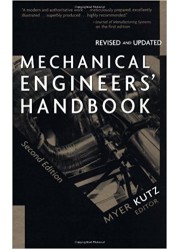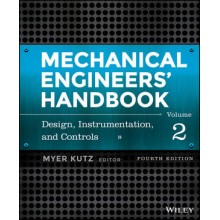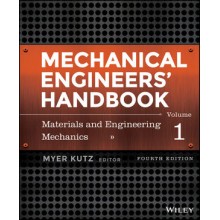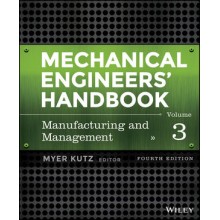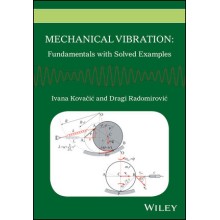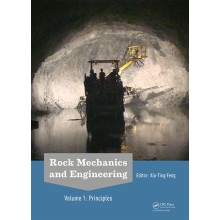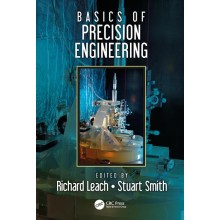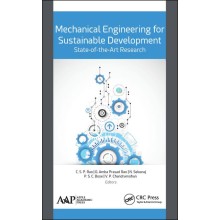Mechanical Engineer's Handbook, 2nd Edition Revised and Updated
Our Price: $265.50
Discount : 10%
Quantity:
-
Add to Compare
Mechanical Engineers' Handbook, Second Edition, is the ultimate guide for the twenty-first century engineer. In a single, easy-to-use volume, it covers a broad spectrum of critical engineering topics and helps you understand the fundamentals, apply the technologies, and get the outcomes you want.
With more than 70% entirely new or revised material, the Handbook keeps pace with rapid developments in materials, methods, and equipment - from concurrent engineering and TQM through virtual reality, advanced and composite materials, ergonomic design factors, electronic packaging, and many more major topics. No other mechanical engineering guide matches this Handbook's array of crucial information and special features, including:
Authoritative contributions from more than 80 leading experts in industry, government, and academia
26 entirely new chapters - including 9 new chapters on mechanical design
A key section on manufacturing engineering - a handbook within a handbook - with 4 new and 5 revised chapters
7 new chapters on management, career, and legal issues
More than 1,300 useful charts, tables, photographs, and illustrations
Extensive cross-referencing and indexing for ease of use and searchability
Detailed, up-to-date reference sections at the end of each chapter
Directions to online databases and other information sources
Whether you're looking for details on materials, any aspect of mechanical design, manufacturing, thermal engineering, or engineering management, Mechanical Engineers' Handbook, Second Edition, gives you fingertip access to the vital information you need to succeed.
For More Details, Please Check the Contents in Brief
Part 1. MATERIALS AND MECHANICAL DESIGN
Chapter 1 : Structure of Solids
Chapter 2 : Steel
Chapter 3 : Aluminum and Its Alloys
Chapter 4 : Copper and Its Alloys
Chapter 5 : Nickel and Its Alloys
Chapter 6 : Titanium and Its Alloys
Chapter 7 : Magnesium and Its Alloys
Chapter 8 : Plastics and Elastomers
Chapter 9 : Composite Materials and Mechanical Design
Chapter 10 : Stress Analysis
Chapter 11 : Concurrent Engineering Revisited: How Far Have We Come?
Chapter 12 : Concurrent Engineering Technologies
Chapter 13 : Computer-Aided Design
Chapter 14 : Virtual Reality-- A New Technology for the Mechanical Engineer
Chapter 15 : Ergonomic Factors in Design
Chapter 16 : Electronic Packaging
Chapter 17 : Design Optimization-- An Overview
Chapter 18 : Failure Considerations
Chapter 19 : Total Quality Management Design
Chapter 20 : Reliability in Mechanical Design
Chapter 21 : Lubrication of Machine Elements
Chapter 22 : Seal Technology
Chapter 23 : Vibration and Shock
Chapter 24 : Noise Measurement and Control
Chapter 25 : Nondestructive Testing
Part 2. SYSTEMS AND CONTROLS
Chapter 26: Systems Engineering:Analysis,Design, and Information
Chapter 27 : Mathematical Models of Dynamic Physical Systems
Chapter 28 : Basic Control Systems Design
Chapter 29 : Measurements
Part 3. MANUFACTURING ENGINEERING
Chapter 30 : Product Design for Manufacturing and Assembly (DFM&A)
Chapter 31 : Classification Systems
Chapter 32 : Production Planning
Chapter 33 : Production Processes and Equipment
Chapter 34 : Metal Forming, Shaping,and Casting
Chapter 35 : Mechanical Fasteners
Chapter 36 : Statistical Quality Control
Chapter 37 : Computer-Integrated Manufacturing
Chapter 38 : Material Handling
Part 4. ENERGY, POWER, AND POLLUTION CONTROL TECHNOLOGY
Chapter 39 : Thermophysical Properties of Fluids
Chapter 40 : Fluid Mechanics
Chapter 41 : Thermodynamics Fundamentals
Chapter 42 : Exergy Analysis and Entropy Generation Minimization
Chapter 43 : Heat Transfer Fundamentals
Chapter 44 : Combustion
Chapter 45 : Furnaces
Chapter 46 : Gaseous Fuels
Chapter 47 : Liquid Fossil Fuels from Petroleum
Chapter 48 : Coals,Lignite,Peat
Chapter 49 : Solar Energy Applications
Chapter 50 : Geothermal Resoures:An Introduction
Chapter 51 : Energy Auditing
Chapter 52 : Heat Exchangers, VaporiZes, Condensers
Chapter 53 : Air Heating
Chapter 54 : Cooling Electronic Equipment
Chapter 55 : Pumps and Fans
Chapter 56 : Nuclear Power
Chapter 57 : Gas Turbines
Chapter 58 : Steam Turbines
Chapter 59 : Internal Combustion Engines
Chapter 60 : Hydraulic Systems
Chapter 61 : Air Compressors
Chapter 62 : Refrigeration
Chapter 63 : Cryogenic Systems
Chapter 64 : Indoor Environmental Control
Chapter 65 : Air Pollution-Control Technologies
Chapter 66 : Water pollution-Control Technology
Part 5. MANAGEMNT,FINANCE,QUALITY,LAW, AND RESEARCH
Chapter 67 : Management Control of Projects
Chapter 68 : Managing People
Chapter 69 : Finance and the Engineering Function
Chapter 70 : Detailed Cost Estimating
Chapter 71 : Investment Analysis
Chapter 72 : Total Quality Management and the Mechanical Engineer
Chapter 73 : Registrations, Certificaions, and Awards
Chapter 74 : Safety Engineering
Chapter 75 : What the Law Requires of the Engineer
Chapter 76 : Patents
Chapter 77 : Electronic Information Resources: Your On-Line Bookshelf
Chapter 78 : Sources of Mechanical Engineering Information
INDEX
Write a review
Your Name:Your Review: Note: HTML is not translated!
Rating: Bad Good
Enter the code in the box below:
Copyright © 2014 Engineering Standards Bureau. All Rights Reserved.
Developed By Zoom Into Web


